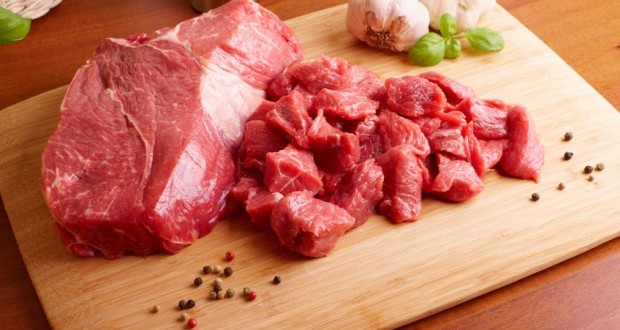When it comes to diet and nutrition, protein is generally viewed as something positive. After all, the body uses protein for a number of purposes, ranging from creating muscle mass to producing hormones. Excessive amounts of protein, however, may have a highly negative impact on the body. In fact, new research has found that diets rich in meat and cheese may potentially be life-threatening to certain adults. Fortunately, there are several alternatives to these products that offer plenty of health-boosting protein.
The Structure and Purpose of Protein
While we’ve all heard of protein, must people would be hard-pressed to provide an actual definition for this substance. Essentially, proteins are a type of organic compound consisting of various combinations of amino acids. There are twenty types of amino acids used to in the makeup of proteins; when making new protein, these amino acids come together in structures known as chains. The amino acid patterns on these chains determine the characteristics of protein molecules.
Given that the chemical makeup of proteins can differ greatly, it’s not surprising that protein molecules have several different responsibilities. Protein is perhaps best well-known for its role in building and repairing various tissues, including muscles. Additionally, proteins also function as hormones (an example being insulin) and antibodies. Another type of protein is catalysts, which facilitate numerous chemical reactions within the body.
Daily Protein Intake
The US Department of Agriculture (USDA) has established a set of guidelines for protein consumption. For example, the USDA states that adults aged 18 and older should aim for 0.8 grams of protein per kilogram of body weight every day. For those unfamiliar with the metric system, 2.2 kilograms are roughly equivalent to one pound. Using this conversion rate, a 150 pound adult would weigh in at about 68 kilograms. In order to meet the USDA’s recommendation, this individual would need about 54 grams of protein daily.
Too Much of a Good Thing?
Though protein plays an indispensable role in the inner workings of the body, getting too much of this nutrient from certain sources may prove to be quite harmful. A recent United States-Italian study warned that a high intake of meat and cheese could greatly increase cancer mortality risk in middle-aged adults. Compared with those in the same age bracket that maintained a low-protein diet, people aged 50 to 65 were four times more likely to succumb to cancer if they frequently consumed these items.
Interestingly enough, this pattern appeared to reverse itself after the age of sixty-five; the report found that seniors on high-protein diets reduced their odds of premature death by 25 percent. As a possible explanation, the researchers suggested that seniors need a greater amount of protein than middle-aged adults. Appearing in the March 4th, 2014 issue of the journal Cell Metabolism, this study involved nearly 6,400 participants, and took almost two decades to complete. While the report itself does not decisively prove that animal protein causes cancer in middle-aged adults, it does indicate that such a relationship is possible.
Looking at Alternative Sources
For many shoppers, protein is synonymous with meat. And to be sure, protein is found in meat products of all types, including chicken, beef and pork. Protein isn’t just found in the meat section of the grocery store, however. If you’re concerned about eating too much meat and cheese, but still want to get an appropriate amount of protein in your diet, you might consider picking up the following items at the supermarket.
Green Peas – Bet you didn’t know that, at 7.9 grams, one cup of green peas has almost as much protein as a cup of milk.
Quinoa – First, just to clear up any confusion, this protein source is pronounced KEEN-wah. And secondly, though it might easily be mistaken for a grain, quinoa is actually a type of seed. Just one cup of this South American import contains more than eight grams of protein.
Almonds – In addition to being a solid source of fiber and healthy fats, almonds also offer a respectable amount of protein; once ounce (equal to about 23 almonds) has six grams of this nutrient.
Pistachios – As with almonds, pistachios have six grams of protein in a one ounce serving. As an added bonus, these shelled nuts feature sizable amounts of potassium, healthy fats and fiber.
White Beans – A single cup of white beans holds 17.2 grams of protein. If you don’t particularly care for white beans, fear not – navy, pinto, adzuki, kidney, black, and garbanzo beans all contain 15 to 17 grams of protein, making them all excellent additions to your diet.
Avocados – Originally hailing from modern-day Mexico, one avocado serves up four grams of protein. While this represents a decent amount of protein, what really sets avocadoes apart from the competition is the type of protein they offer. The protein in avocados contains the nine amino acids that are classified as “essential,” meaning that they cannot be made by the body. People lacking these nutrients can suffer from problems like deteriorating muscle mass, stress and fatigue.
Greek Yogurt – Greek yogurt not only has twice the protein content of regular yogurt, it also has half the amount of sugar. In fact, six ounces of Greek yogurt have the same amount of protein (15 to 20 grams) as a 2 to 3 ounce serving of lean meat.
 Natural Knowledge 24/7 Educate yourself with nutrition, health and fitness knowledge.
Natural Knowledge 24/7 Educate yourself with nutrition, health and fitness knowledge.






